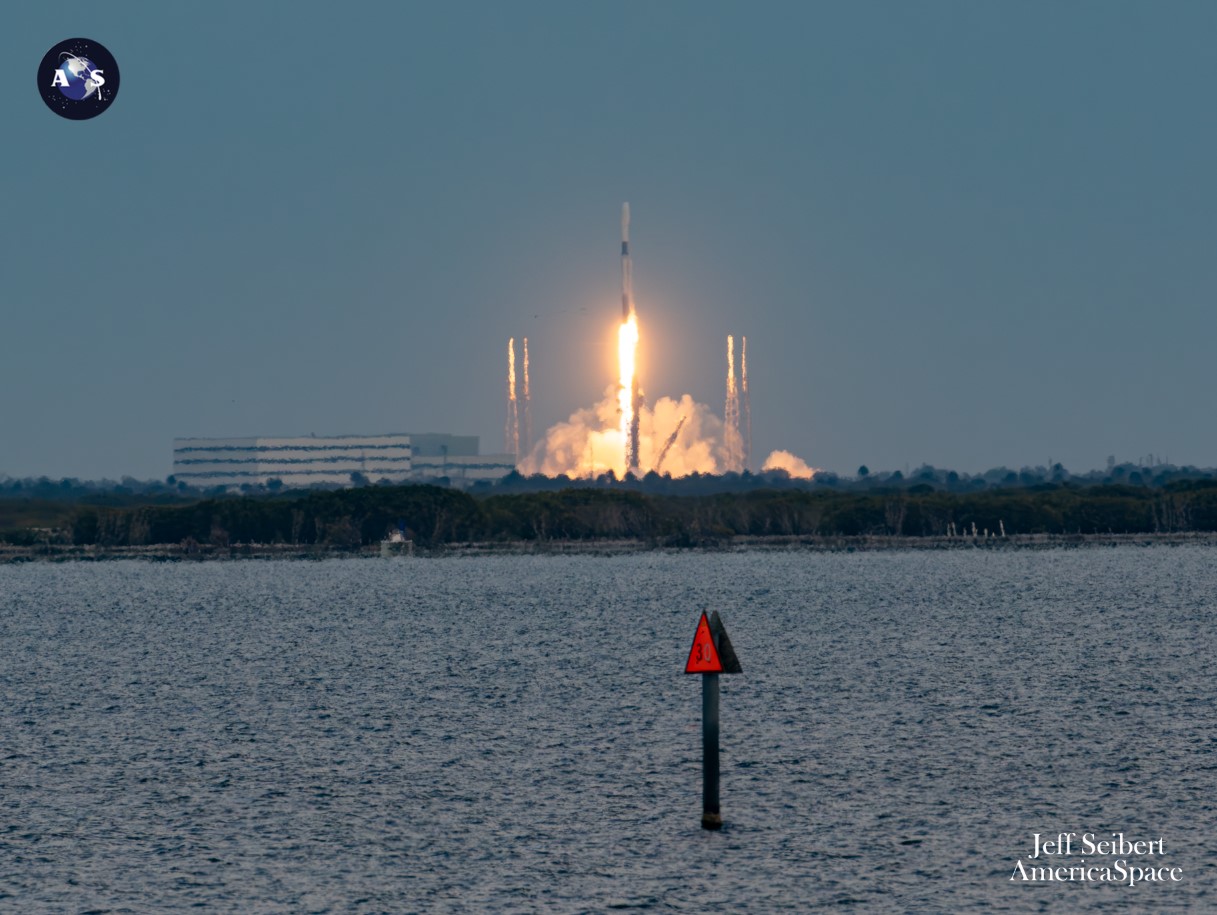
SpaceX stands on the cusp of achieving a quarter-century of Falcon 9 launches inside 2024’s first ten weeks, following a remarkable double-header of missions on Sunday night laden with dozens of Starlink low-orbiting internet communications satellites. A pair of boosters which now boast 27 flights between them rose only five hours apart from opposing coastlines of the United States—the first from storied Space Launch Complex (SLC)-40 at Cape Canaveral Space Force Station, Fla., the second from historic Space Launch Complex (SLC)-4E at Vandenberg Space Force Base, Calif.—as SpaceX pushes ahead with a mission-heavy March and a busy spring.


Last night’s pair of flights bring to 24 the total number of Falcon 9 launches conducted so far in 2024, using 16 boosters, eight of which have flown more than once since the start of the year. Fifteen missions have been devoted to expanding SpaceX’s Starlink network, delivering over 300 flat-packed internet communications satellites into space, together with Swedish and Indonesian geostationary communications satellites, missions to explore the Earth’s oceans and the Moon’s potential habitability, a highly classified payload for the U.S. Space Force, a Northrop Grumman Corp. Cygnus cargo mission, a multi-customer Transporter “stack” and two crewed missions to the International Space Station (ISS).
In ten short weeks, records have fallen like ninepins. In January, SpaceX achieved its first ten-launch calendar month, recorded its first-ever “Leap Day” mission on 29 February and last week flew a pair of Falcon 9s under two hours apart for the first time.
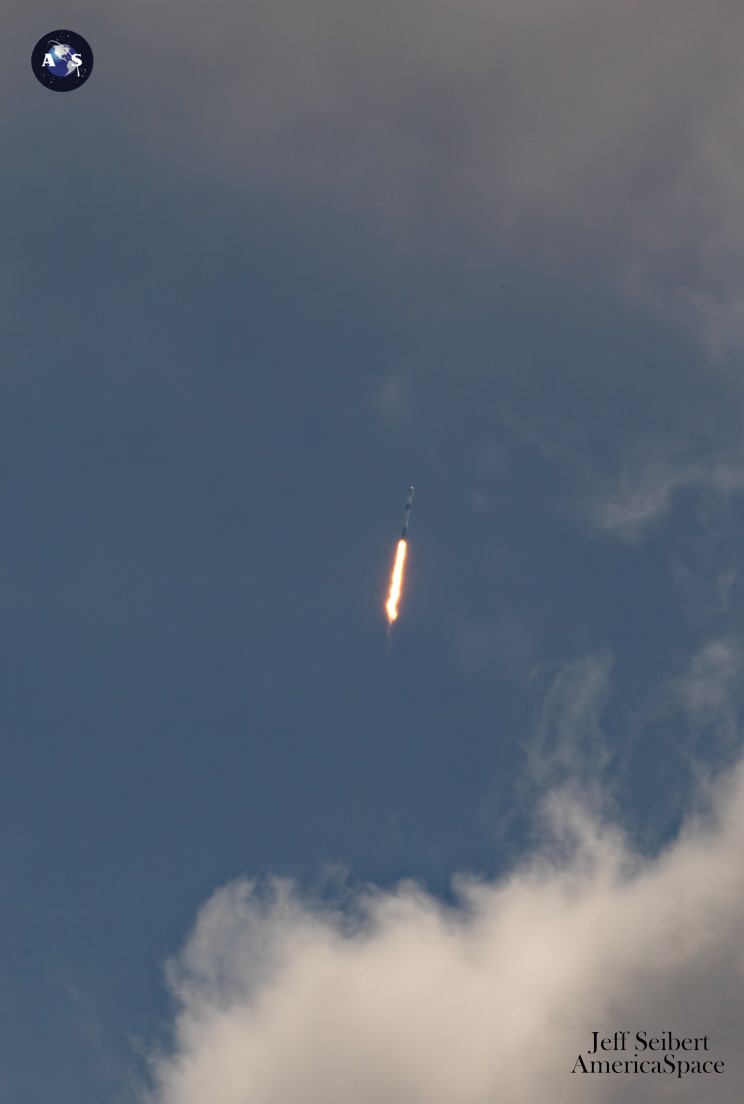

Initial plans called for last night’s pair of missions to occur only three hours apart, the first from the Cape at 7:05 p.m. EDT, the second from Vandenberg at 7:13 p.m. PDT. The former took flight precisely on time, powering aloft into the early Florida evening under 1.5 million pounds (680,000 kilograms) of thrust from its nine Merlin 1D+ engines.
Flying this first mission of Sunday night was B1077, making her 11th flight in only 17 months. Since her maiden outing in October 2022, this booster has deployed over a hundred Starlinks, crewed and uncrewed missions to the ISS, a pair of geostationary communications satellites for Intelsat and Inmarsat and the latest Block III Global Positioning System (GPS) navigation and timing satellite on behalf of the U.S. Space Force.


Most recently, at the end of January B1077 became the first Falcon 9 to launch cargo missions for both of NASA’s in-service Commercial Resupply Services (CRS) partners. Having already flown a Cargo Dragon to the ISS in June 2023, she was first in the SpaceX fleet to also lift a payload-laden Northrop Grumman Corp.-built Cygnus.
Eight minutes after last night’s liftoff, B1077 swept to a pinpoint landing on the deck of the East Coast-based Autonomous Spaceport Drone Ship (ASDS), “Just Read the Instructions”, situated some 390 miles (630 kilometers) offshore in the Atlantic Ocean. Attention then turned to SLC-4E at Vandenberg—a distance of more than 2,700 miles (4,300 kilometers), point to point, as the crow flies—on the West Coast for SpaceX’s second launch of the evening, targeted during a four-hour “window” from 7:13 p.m. PDT through 11:13 p.m. PDT.
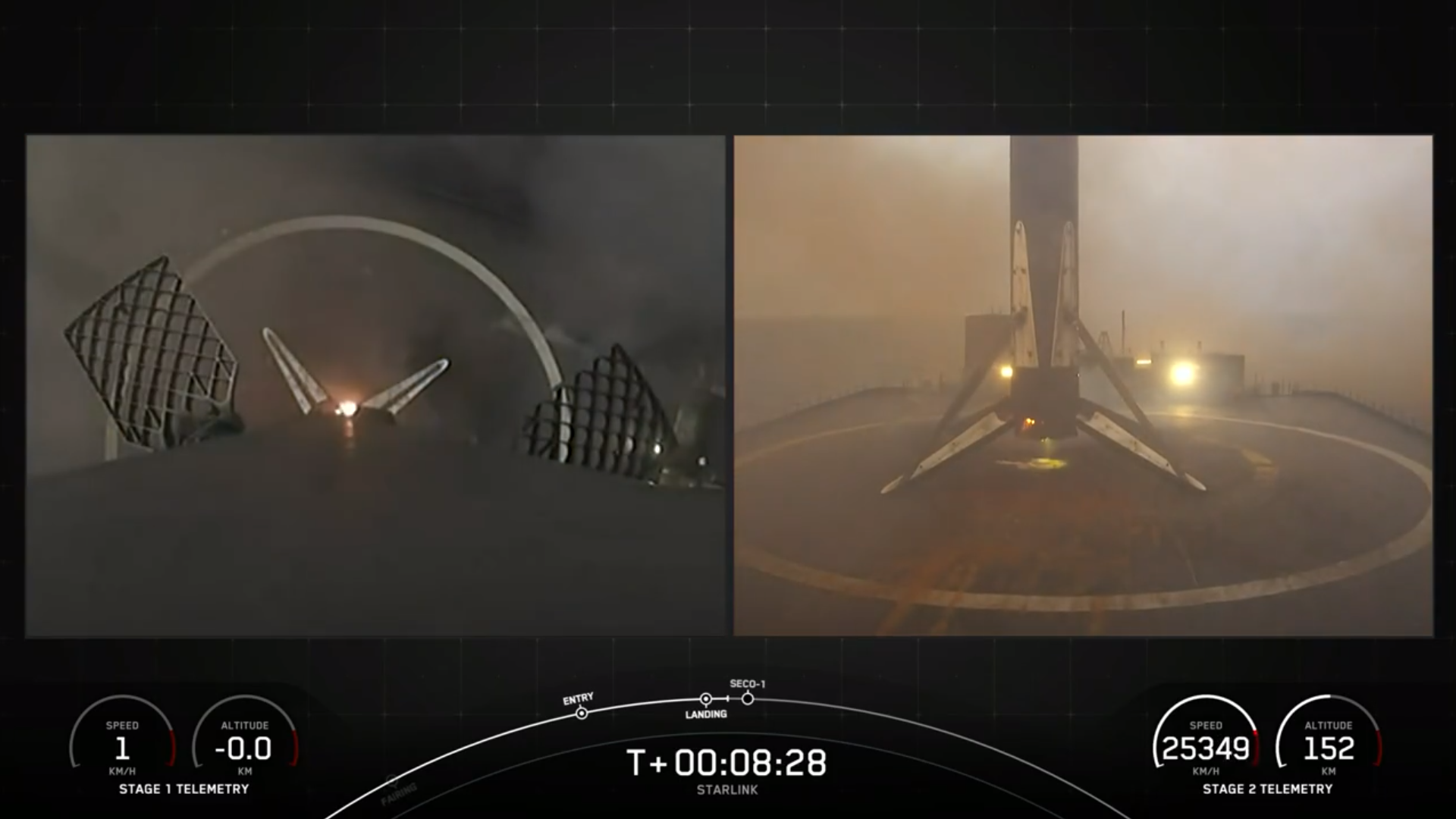

SpaceX teams instead elected to aim for deeper into the window and the B1063 booster, making her 17th flight, lifted off at 9:09 p.m. PDT, some five hours after B1077. Eight minutes later, she too returned safely to Earth, alighting on the deck of the West Coast-based drone ship, “Of Course I Still Love You”.
B1063 entered service in November 2020 and went on to log two launches in 2021, another five in 2022 and an additional seven last year. Key payloads included NASA’s Sentinel-6 Michael Freilich and Double Asteroid Redirection Test (DART), the second Tranche 0 batch of Transport and Tracking Layer (TTL) satellites for the Space Development Agency (SDA), five Iridium NEXT global mobile communications satellites, 16 advanced broadband satellites for London, England-based OneWeb, nearly 500 Starlinks and last April’s 51-payload Transporter-7 “rideshare” mission.


Both of last night’s flights successfully deployed their 23-strong Starlink stacks a little more than an hour after launch, bringing to over 330 the total number of these flat-packed internet communications satellites lifted to orbit so far in 2024. And achieving 24 Falcon 9 launches inside the year’s tenth week represents a marked uplift on last year, which took SpaceX until the middle of April to reach.
So far, the pace of launches since January has averaged a flight every 2.9 days or so, markedly higher than last year’s mission each 3.8 days. If that tempo is maintained or exceeded, it sets SpaceX on course to reach or surpass 125 missions before the end of 2024, a 25-percent increase on 2023’s record of 96 flights.
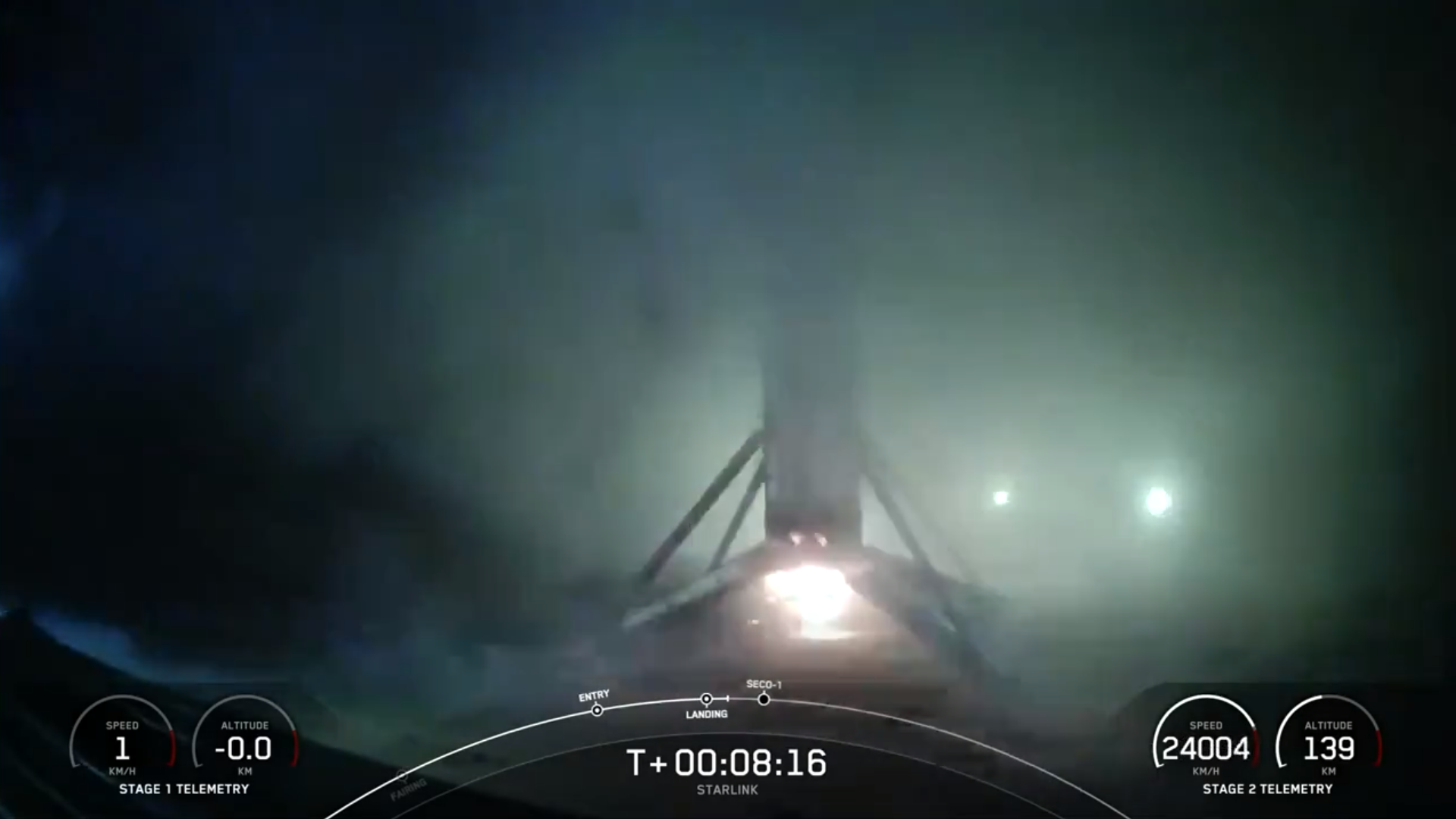

As a network, Starlink enables high-speed and low-latency internet provision to over 70 sovereign nations and international markets in North and South America, Europe, Asia, Oceania and Africa. Landlocked Eswatini—formerly Swaziland—in southern Africa and Honduras and Paraguay joined Starlink in December.
The downsized V2 Mini satellites, first flown last February, boast three to four times greater “usable” bandwidth than earlier Starlink iterations. “V2 Minis include key technologies—such as more powerful phased-array antennas and the use of E-Band for backhaul—which will allow Starlink to provide 4x more capacity per satellite than earlier iterations,” SpaceX explained. “Among other enhancements, V2 Minis are equipped with new argon Hall thrusters for on-orbit maneuvering.”
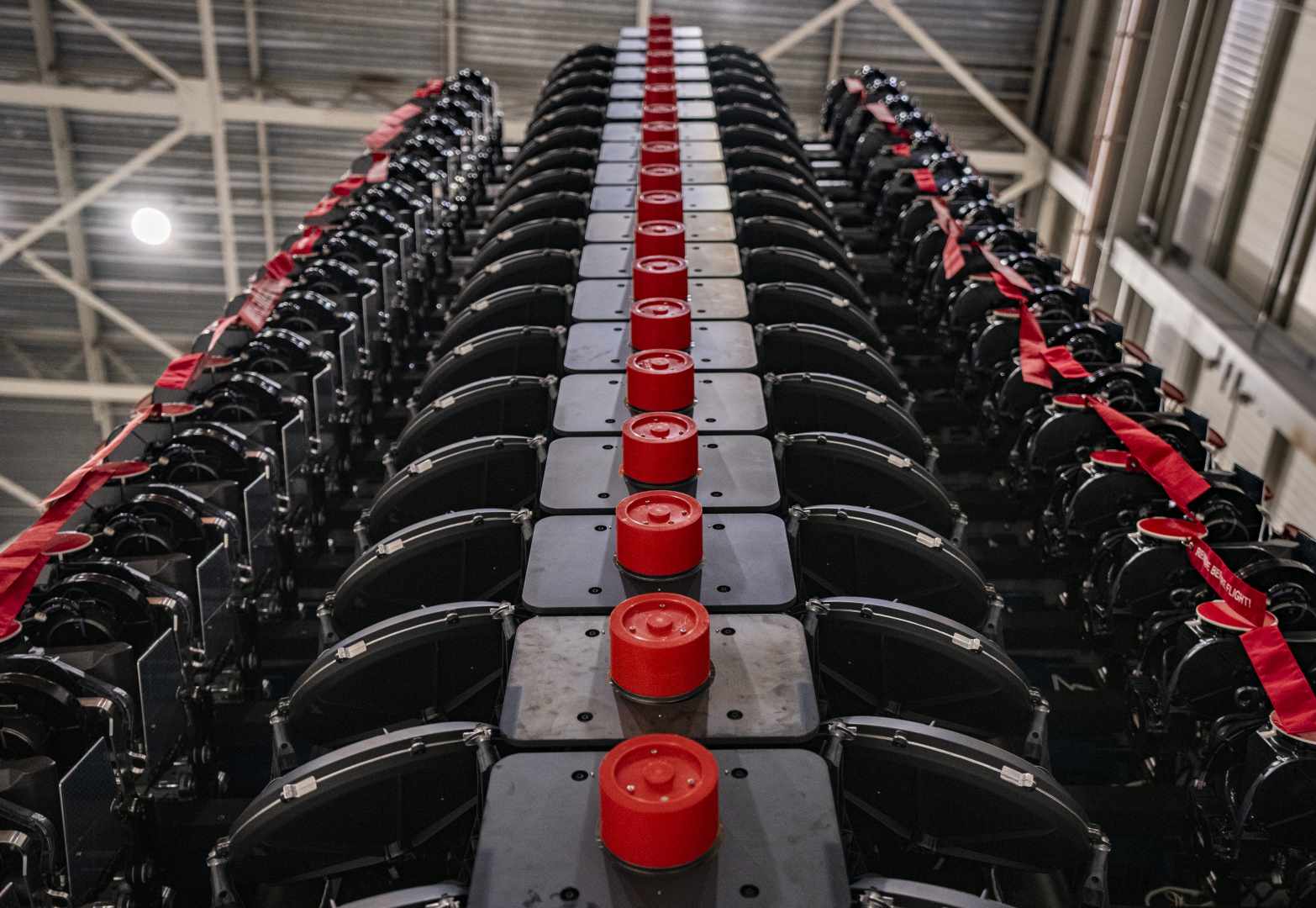

Florida-based intercity operator Brightline adopted Starlink on its trains in 2023, the first passenger rail service in the world to do so. Additionally, El Salvador’s Ministry of Education has begun integrating Starlink capability into its schools to help close the digital divide between urban and remote rural communities and 50 Rwandan schools are now connected via Starlink’s high-speed internet service.
And in January, SpaceX lofted its first six “Direct-to-Cell” Starlinks, which permit mobile network providers to offer “seamless global access to texting, calling and browsing”, whether “on land, lakes or coastal waters”, without the need to change hardware or firmware. Within six days of that first launch, SpaceX engineers sent and received their first text messages via Direct-to-Cell.







